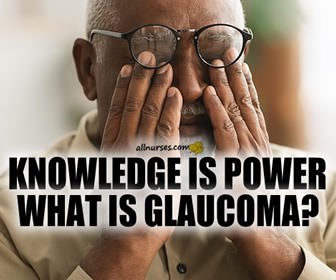- Community
-
Programs
- Schools
-
Careers
- RN Specialties
- Best RN Jobs and Salaries
- Aesthetic Nurse
- Nursing Informatics
- Nurse Case Manager
- NICU Nurse
- Forensic Nurse
- Labor and Delivery Nurse
- Psychiatric Nurse
- Pediatric Nurse
- Travel Nurse
- Telemetry Nurse
- Dermatology Nurse
- Nurse Practitioner
- Best NP Jobs and Salaries
- Family NP (FNP)
- Pediatric NP
- Neonatal NP
- Oncology NP
- Acute Care NP
- Aesthetic NP
- Women's Health NP
- Adult-Gerontology NP
- Orthopedic NP
- Emergency NP
- Psychiatric-Mental Health NP (PMHNP)
- APRN
- Nurse Educator
- Nurse Administrator
- Certified Nurse Midwife (CNM)
- Clinical Nurse Specialist (CNS)
- Certified Registered Nurse Anesthetist (CRNA)
- Resources
- Education


January is National Glaucoma Awareness Month and a great time to learn more about the leading cause of vision loss and permanent blindness in the U.S. Let's look at a few eye-opening statistics around the condition.
You can do your part to raise awareness by simply learning more about this sight-stealing condition.
What is Glaucoma?
Glaucoma is a group of eye conditions that can cause damage to your optic nerve. The optic nerve is made up of millions of nerve fibers that run from your retina and meet at the optic disc. In most types of glaucoma pressure abnormally builds up in the eye; causing damage to the optic nerve leading to vision loss.
What causes pressure buildup?
Aqueous humor is the clear fluid that carries nutrients to the eye's lens and cornea. It also plays an important role in maintaining normal pressures within the eye. This fluid usually drains out of the eye at the angle where the iris and cornea meet. If the drainage system isn't working or there is too much aqueous humor being produced, then fluid can't flow out properly and internal eye pressure increases.
Who is at Risk?
Everyone is at risk for glaucoma, regardless of age. However, there are people who carry a higher risk, including individuals who:
Primary Open Angle Glaucoma (POAG)
The most common form of glaucoma is Primary Open-Angle Glaucoma and occurs when pressure builds up in the eye slowly over time. Unfortunately, you typically don't notice any symptoms until a significant amount of vision has been permanently lost. This is why the disease is sometimes referred to as the "sneak thief of sight". When symptoms do appear, they may include:
Health Conditions that Increase Risk of POAG
Certain health conditions can increase your risk of developing POAG. These include:
Other risk factors for POAG:
Treatment
If caught in the early stages, treatments and regular check-ups can slow or prevent vision loss. Treatment is aimed at lowering the pressure within your eye and may include prescription eye drops, oral medications, laser treatment, surgery, or any combination of these options. You can learn more about each specific treatment here.
Glaucoma Prevention
There are things you can do to reduce your risk of vision loss from glaucoma.
Four Key Take-Aways
Glaucoma Awareness Month gives us an opportunity to help clear any misconceptions about glaucoma. Here are 4 key facts to help you remember why it goes undetected and who is at greatest risk.
Let Us Hear From You
What information about glaucoma would you like to share with readers?
References
January is Glaucoma Awareness Month
CDC Website- "Don't Let Glaucoma Steal Your Sight!”
Glaucoma.org- "Understanding and Living With Glaucoma"
Glaucoma.org- "Glaucoma Awareness Month"Mayo Clinic Glaucoma
Glaucoma: Mayo Clinic
About J.Adderton, BSN, MSN
Experienced nurse specializing in clinical leadership, staff development and nursing education.
Share this post
Share on other sites